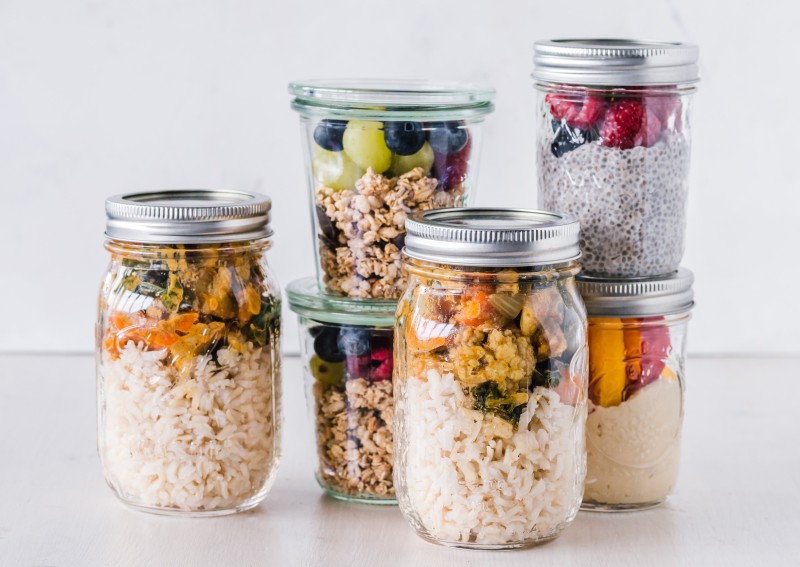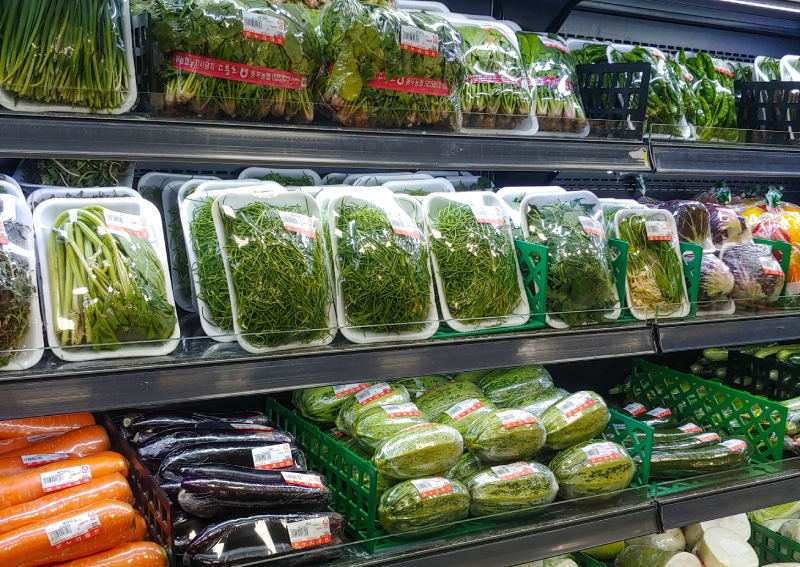5 earth-friendly cling wrap alternatives for food storage

AsiaOne has launched EarthOne, a new section dedicated to environmental issues — because we love the planet and we believe science. Find articles like this there.
In celebration of Earth Day, I am going to plunge headfirst into the never-ending plastic war.
Why should disposable carrier bags in supermarkets get all the attention?
Here's another culprit we should all point fingers at: Cling wrap (also referred to as cling film, plastic wrap).
Cling wrap's harmful to the planet like any plastic, but they are particularly so because they can be difficult to recycle (too flimsy, causes clogging in most machinery).
So they accumulate in landfills or get thrown (accidental or otherwise) in our natural environments, taking years and years to break down and causing problems for marine and animal life en route.
And all this is compounded by how much we rely on cling wrap.
National Geographic found that in just six months alone, more than 5 million Americans had gone through 10 million boxes of cling wrap.

In Singapore, while there aren't any exact stats for our cling wrap use, the Singapore Environment Council estimates that we are using about 473 million plastic disposable items each year.
I would imagine the numbers for cling wrap use would be equally astonishing, relatively speaking, thanks to its convenience and affordability for food storage and food packaging (notice how many vegetables and meats are wrapped in cling wrap in our supermarkets?).

But it's not only the planet it is harming; cling wrap may also be causing problems for our health down the road because of the formation of microplastics.
For the uninitiated, Microplastics are tiny fragments of plastics that are broken off from larger plastic pieces.
A study has found that microplastics get released just by ripping off cling wrap packaging from our foods.
While the results aren't conclusive as to the harm of microplastics on our bodies, surely ingesting a bunch of microplastics cannot be good for us.
To reduce exposure to plastics and to do my part in mitigating the harmful effects of cling wrap on our planet, I went on a hunt for cling wrap alternatives for storing my leftovers:
[embed]https://www.instagram.com/p/CCXyajan6JQ/?utm_source=ig_web_copy_link[/embed]
These were the first ones I turned to, having heard of them from an eco-conscious friend.
They function just like cling wraps-you wrap them over your food or bowls-except they are made from more sustainable materials.
Beeswax wraps are usually a blend of organic cotton, beeswax, tree resin, and coconut or jojoba oil. Unlike cling wrap, they are reusable and washable (wash them under running cold water).
Plus, they come in a fabulous array of patterns and colours. They have a lifespan of about a year or so before they wear out and no longer cling onto bowls as easily.
The good news is that you can pop them in the oven to revive them, essentially allowing you to use them indefinitely.
You can get beeswax wraps here, here or here

I love collecting old glass jars from jams and pasta sauces, thinking some day I'll have a use for them. Turns out, they make great food storage containers.
They are relatively airtight, don't stain or retain smells (definite win for my curry leftovers) and they are see-through, so you know what's inside.
The only caveat is that some of them have relatively small openings, making them difficult to scoop food in or wash.
Alternatively, you can get glass containers for cheap from places like Daiso or Ikea or splurge on fancy glass food containers that come with the added benefits of being microwave-, oven- or freezer-friendly, making it easy to meal prep or to reheat directly.
Ones with gaskets are particularly useful if you want to keep foods fresh for longer since they help to make it more airtight.
Shop here and here for some of my favourite glass containers
READ ALSO: Sustainability in Singapore: Eco-friendly ways to adapt to the existence of Covid-19 in daily life
[embed]https://www.instagram.com/p/CLLTESjDdb2/?utm_source=ig_web_copy_link[/embed]
These sound pretty remarkable. They are essentially reusable silicone bags designed, according to their website, to be "endlessly reusable".
[[nid:489657]]
Besides storing leftovers, they can also be used to marinate and cook foods in. Stasher bags can be boiled, placed in the microwave, oven, freezer and the dishwasher.
They are airtight, come in various sizes and are very space-friendly because of how compact and flexible they are.
As amazing as it all sounds, I still had one reservation, owing to the silicone material. Silicone, as my silicone spatula can attest, tends to absorb odours.
I definitely did not want the smell of last night's bolognese to linger in my Stasher Bag long after I've digested every bit of it.
The website does recommend two ways of getting rid of lingering smells on the Stasher: Baking it in the oven or soaking it in a vinegar, hot water and salt solution.
You can get Stasher bags here, here and here
[embed]https://www.instagram.com/p/CM9VcVOH4nW/?utm_source=ig_web_copy_link[/embed]
If you don't need an airtight solution or you just need a short-term food storage option, washable cotton covers are a good cling wrap alternative.
They are similar to beeswax wraps with both made from cotton, but these are easier to wrap around the bowl (as long as you get them in the right size) since they are 100 per cent cotton. (With beeswax wraps, you'll have to use the warmth of your hands to mould them around your containers.)
You also have the added benefit of being able to throw cotton covers in the washer whenever they get dirty.
Get washable cotton food covers here, here and here
[embed]https://www.instagram.com/p/CLktdxepUnm/?utm_source=ig_web_copy_link[/embed]
These not only work great as a cling wrap alternative, but they might just be better than their plastic counterparts.
Silicone stretch lids offer similar malleability, but they have the added advantage of being leak proof!
[[nid:526403]]
No more unwanted spills in the refrigerator from clumsy butter fingers, y'all.
They even fit over unused and fruits, like that half avocado I've been saving for avocado toast.
For better seal suction, you definitely want to keep the lids and your containers as dry as you can.
The lids don't work too well in the event of condensation, but a wipe should do the trick and make the seal tight again.
For convenience, you will also want to get the lids in a set for the different sizes to fit your different sized containers.
You can get round ones here and square ones here
This article was first published in Renonation.sg.